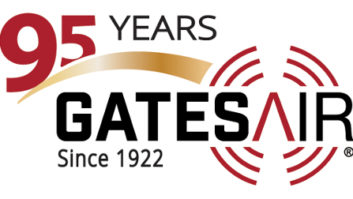
Toufik Boudena is director of technical services and equipment at Radio Algérienne.
PARIS — Various aspects concerning the digitization of the radio industry were on stage at the Salon de la Radio/European Radio Show, held in Paris Jan. 29–31. On the last day of the event, two conference sessions focused in on the subject from both the point of view of radio content production and distribution.
During the session titled “La numérisation de la radio en Afrique” (Digitization of Radio in Africa), speakers discussed Africa’s present status and expected future developments of digital production tools and systems for the studio in the French-speaking African radio market. The panel’s general consensus was that that radio production in Africa is now mainly digital, particularly at national broadcasters.
IN THE STUDIO
Dominique Guihot, president and managing director of Africa N°1, said the broadcaster is driven to digital content management in order to access various content, which is available in Europe only in digital format. Carlos Acciari of Radio France International added that reporters who used to edit content on magnetic tapes can are now easily edit via a PC.
Toufik Boudena, director of Technical Services and Equipment at Radio Algérienne, reminisced about when a “mysterious shack” appeared at the station’s premises. “This digital cabin included Digital Audio Tape (DAT) and Mini-Disc (MD) recorders.” Thanks to the digitization of our everyday tools, everything is much easier,” he said. “The drawback is that former radio staff sometimes feel like their role has been taken over by IT professionals.”
On the same day, the session “DAB+ in Europe — a Vision for the Future of Radio,” highlighted the current state and development of digital radio in Europe.
Jørn Jensen, senior adviser for Norwegian public broadcaster NRK, informed the audience about the country’s ongoing transition toward DAB. He said that DAB coverage in Norway now accounts for 99.7 percent and 71 percent of the houses has at least a DAB receiver. In the Nordland region, the first where FM emissions ceased last January, this figure reaches 77 percent.
As for content, he said that more than 50 percent of weekly listeners now tune to radio stations that would have not existed without digitization. Jensen pointed out that the nation’s number of national channels grew from five on FM to 30 on DAB, and that many thematic channels are gaining momentum, including dedicated channels targeting children, teenagers and those over the age of 55.
DAB+ IN EUROPE
Marcel Regnotto, from the Federal Office of Communications and Media in Switzerland (OFCOM), gave the audience an overview of his country’s digital radio landscape.
He said that 40 out of 42 commercial stations, which own a FM license, are now simulcasting on DAB. He added that digital radio coverage now reaches about 98 percent of the population and that 74 percent of homes now have a digital receiver.
In addition, he pointed out that last spring, the country’s overall FM radio listening had decreased for the first time below 50 percent to 47 percent. He also stated that DAB listening was at 27 percent, exceeding for the first time, digital listening through the Web, which is now at 26 percent. Regnotto concluded by saying that the country’s radio broadcasters “will be able to switchover to DAB when digital listening exceeds 80 percent,” adding that he expects this to happen after 2020.
Nicolas Curien, a member of France’s Conseil supérieur de l’audiovisuel (CSA), acknowledged how the French radio industry was late in entering the digital radio environment.
PICKING UP THE PACE
“I prefer to do things in a proper and timely way, when it is the most appropriate moment,” said Curien. “Now it is the time to speed up our digital process. We decided to introduce digital radio at a pace of three regions at a time, and I now suggest that the CSA raises this figure to five regions at a time.” Curien confirmed that in-car listening is a priority as is digital coverage across trunk roads and highways.
According to Jacqueline Bierhorst, project director at Digital Radio+ Netherlands, in her country there is no real national commercial FM station. “Nine commercial broadcasters, which were already on the market, joined efforts to form a single national DAB multiplex,” she said. “This is how the first nationwide commercial broadcast came to be.”
Bierhorst says the Netherlands is not aiming for a digital switchover at the moment. “I believe that it will be a natural evolution — in 2023 we will evaluate the scenario and look at possible future steps. Presently, we all are deeply committed to developing a healthy digital radio ecosystem, as well as to produce great radio content,” she concluded.
Carsten Zorger, from Digital Radio Büro Deutschland in Germany, said the advent of digital radio was the first opportunity to have stations capable of covering the entire country with a single technology. The station, which has an FM coverage of about 70 percent, is now also available nationwide on a DAB multiplex.
Digital radio also offered the possibility for some former regional FM stations to step-up to national coverage. One example is the Bavarian station, Energy Munich. “We expected to have a digital roadmap issued by our authorities before the end of 2016, but we didn’t succeed,” he said. “This Roadmap, which will indicate our national strategy on the matter, is now due in March.”
He added that applications are presently open for a second nationwide DAB multiplex. The license will be released next summer with on-air broadcasts expected to begin before the end of 2017.
Davide Moro reports on the industry for Radio World from Bergamo, Italy.












